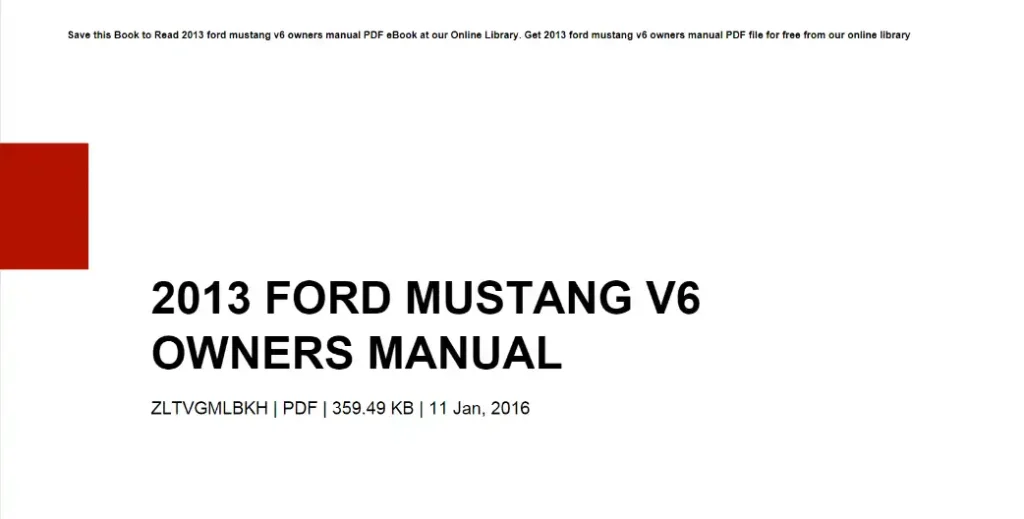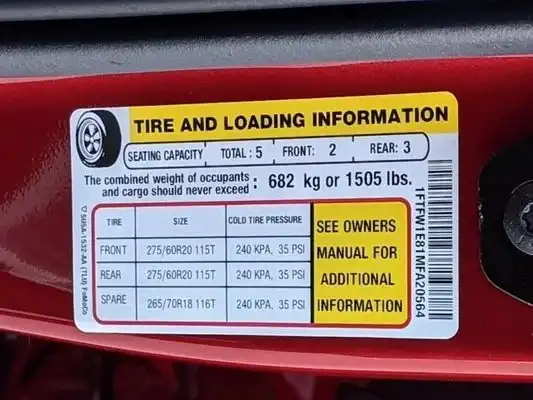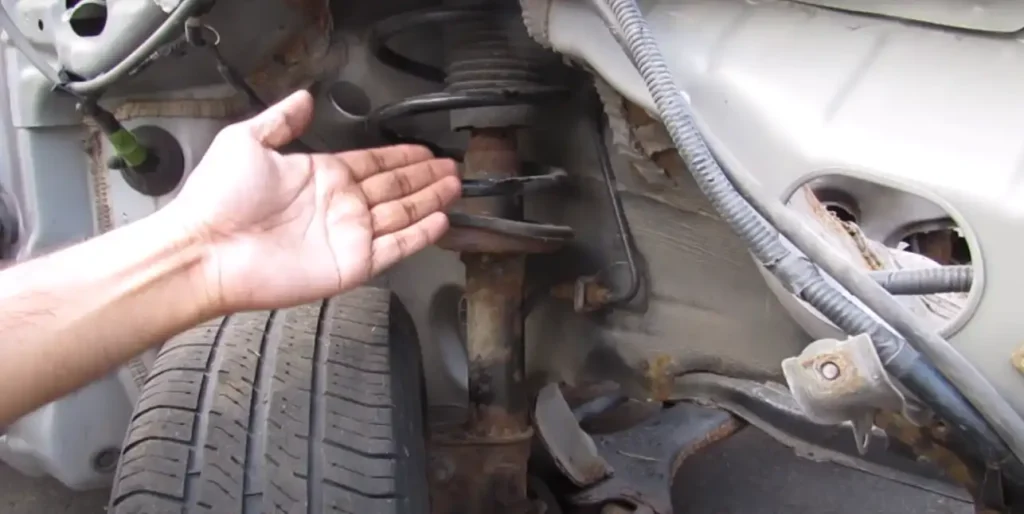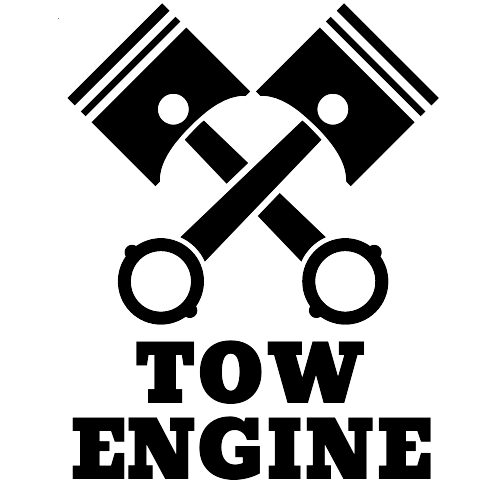The term “Maximum Towing Capacity” is one that’s frequently highlighted in vehicle specifications, especially for trucks, SUVs, and other heavy-duty vehicles.
In this article, we’ll delve deep into what maximum towing capacity really means, the science and math behind it, and why it’s so essential for every vehicle owner to be aware of it.
We will debunk common misconceptions, clarify frequently confused terms, and provide practical guidance on how to make the most of your vehicle’s towing capabilities.
Whether you’re a seasoned driver with years of towing experience or a newbie just starting out, there’s something here for everyone. So, let’s hitch up and dive in!
Table of Contents
- Understanding Towing Capacity: A Definition
- Explore Detailed Towing and Payload Capacities
- How to Determine Truck Towing Capacity?
- Factors Determining Max Towing Capacity
- Unbraked vs. Braked Towing Capacity: How They Affect Maximum Towing Capacity
- Common Misconceptions about Max Towing Capacities
- Safe Maximum Towing Capacities: Percentage Recommendations
- Tips for Safe Towing Within Capacity Limits
- What Can I Tow with a 5000 lbs Towing Capacity?
- FAQs
Understanding Towing Capacity: A Definition
Towing capacity refers to the maximum allowable weight that a vehicle can safely tow without risking damage to itself or compromising safety on the road. It’s a metric determined by vehicle manufacturers based on a range of factors, from the vehicle’s engine power and braking capacity to its frame strength and suspension system.
But why is it so crucial for drivers to understand?
When a vehicle tows something beyond its capacity, it can strain the engine, wear down the brakes faster, and even cause structural damage to the vehicle.
However, the towing capacity isn’t just a singular weight limit that you shouldn’t exceed. It also serves as a guideline to ensure optimal performance.
Explore Detailed Towing and Payload Capacities
How to Determine Truck Towing Capacity?
You can easily find out the Towing Capacity of your vehicle by consulting the vehicle manual. Another way is by inspecting the door jamb sticker on the driver’s side for weight specifics and then utilizing the formula: Towing Capacity = GCWR – Curb Weight – Cargo – Passengers – Tongue Weight.
However, there are many ways to calculate the maximum towing capacity of your vehicle. Below I’ve listed the most widely used and my personal towing capacity research methods that may help you find your capacities.
1. Refer to the Vehicle’s Manual:
The simplest and most accurate step is to consult the owner’s manual of your vehicle. Manufacturers always list towing capacities, often breaking them down based on different types of hitches and towing scenarios.
So, referring to your vehicle’s Manual or Brochures is the easiest method to find out and calculate the maximum tow capacities.

If the manual is unavailable, many manufacturers have online databases where one can input their vehicle’s model and get its specs. Another option is to visit the truck’s official dealership or contact the manufacturer directly.
2. Check the Vehicle’s Door Jamb Sticker
The second method is to check your Vehicle’s Door Jamb Sticker. Most vehicles have a sticker located on the door jamb (usually the driver’s side) that provides crucial information about the vehicle’s weight.

This sticker will often list:
- GVWR (Gross Vehicle Weight Rating): The maximum allowed weight for the vehicle, including passengers, cargo, and the vehicle itself.
- GAWR (Gross Axle Weight Rating): The maximum distributed weight that may be supported by an axle.
- Payload: The maximum weight of passengers and cargo that the vehicle can carry.
While this sticker might not directly mention towing capacity, it provides essential information for calculations, especially if other sources are not available. And we can calculate trailer towing capacity with these numbers. We’ll see how.
Not sure what these terms mean! Read the following detailed articles and their detailed calculations for deep understanding.
- GCWR vs. GVWR: What Do They Mean? [A Complete Guide]
- GAWR (Gross Axle Weight Rating)
- What is Payload Capacity? [A Complete Guide]
3. Towing Capacity Calculation – Using Formulas
Given the details provided, the formula to calculate the maximum towing capacity is straightforward: Subtract the Curb Weight of your vehicle from the GCWR (Gross Combined Weight Rating).
Towing Capacity = GCWR – Curb Weight – Cargo Weight – Passengers Weight – Tongue Weight – Weight of Body Additions
Example Calculation:
Let’s break down the formula and provide an example to make it clearer.
Given example values:
- GCWR (Gross Combined Weight Rating) = 15,000 lbs
- Curb Weight (weight of the vehicle without occupants or cargo) = 5,000 lbs
- Cargo Weight (weight of the items loaded in the vehicle) = 1,000 lbs
- Passengers Weight (combined weight of all the passengers) = 400 lbs (assuming two adults)
- Tongue Weight (weight that a fully loaded trailer puts on the hitch of the towing vehicle) = 300 lbs
- Weight of Body Additions (any modifications or additions to the vehicle body) = 200 lbs
Calculation:
Towing Capacity = 15,000 – 5,000 – 1,000 – 400 – 300 – 200
Towing Capacity = 15,000 – 6,900
Towing Capacity = 8,100 lbs
So, in this example, the towing capacity of the vehicle would be 8,100 lbs. This means the vehicle can safely tow a trailer weighing up to 8,100 lbs.
4. Determine the Vehicle’s Curb Weight
The curb weight refers to how much your vehicle weighs when it’s resting on the curb, without passengers or cargo, but with essential fluids like oil and coolant.
You can often find this information in the vehicle’s manual. If not, various automotive websites maintain databases of vehicle specifications, including curb weight.Curb Weight is also an essential number that can be used while calculating the max tow capacity of your vehicle.
Read an in-depth article on What Curb Weight is and How it Can affect your Vehicle Capacities?
5. Calculate the Payload
Payload is the total weight a vehicle can carry in its cabin and cargo bed, including passengers, cargo, the weight of the hitch itself, and the tongue weight. It’s separate from towing capacity and is particularly important for pickup truck users.
Read an in-depth article on What Payload Capacity is and How is it Calculated?
6. Factor in the Tongue Weight
Tongue weight is the weight pressing down on the vehicle’s hitch from the trailer. Ideally, tongue weight should be about 10-15% of the trailer’s total weight.
Therefore, if you’re towing a 5,000-pound trailer, the tongue weight would ideally be between 500 and 750 pounds. This weight counts against your vehicle’s payload and is subtracted from the maximum towing capacity.
Read more about: What Tongue Load or Tongue Weight is and How is it Calculated?
Factors Determining Max Towing Capacity
Towing capacity isn’t a number derived arbitrarily by manufacturers. It’s a result of various factors, each playing a crucial role in determining how much weight a vehicle can safely tow.
Factors determining a vehicle’s maximum towing capacity include engine size and power, transmission type and capabilities, frame and chassis design, axle ratio, braking system quality, suspension type and features, tire load rating and type, specific towing equipment, and any additional equipment or aftermarket upgrades.
It’s essential to understand these components to tow safely and efficiently. Let’s dive in!
1. Engine Size and Power
The engine is the heart of any vehicle, and its power and size play a pivotal role in towing capacity.
- Horsepower: Indicates the engine’s ability to perform work. A higher horsepower can generally translate to higher towing capabilities.
- Torque: Especially relevant in towing, torque refers to the twisting force the engine produces. It determines how well a vehicle can move heavy loads, especially from a stationary position or up an incline.
2. Transmission
The transmission, whether automatic or manual, determines how engine power is relayed to the wheels. When towing, the transmission’s capabilities, and design can significantly influence how the vehicle handles the load.
- Gear Ratios: Specific ratios can optimize power delivery for towing. Trucks designed for heavy towing often have transmission setups favoring torque over high-speed performance.
- Cooling Systems: Towing can strain transmissions, leading to overheating. Vehicles with enhanced cooling systems can tow more without risking transmission damage.
3. Frame and Chassis Design
The vehicle’s frame supports the entire load, both the vehicle itself and the towed weight.
- Construction: A full-boxed frame, commonly found in trucks, offers more strength than a C-frame.
- Materials: The use of high-strength steel or other durable materials can increase towing capacity.
4. Axle Ratio
The axle ratio describes the number of times the driveshaft rotates compared to the wheels. A higher axle ratio offers more towing power but might reduce fuel efficiency.

5. Braking System
When towing, stopping becomes as crucial as moving. A robust braking system is essential for safe towing.
- Brake Size and Type: Larger brakes or disc brakes can offer more stopping power, essential when towing heavy loads.
- Integrated Brake Controllers: Some vehicles come equipped with systems that sync the vehicle’s brakes with the trailer’s brakes, offering smoother and safer stops.
6. Suspension System
The suspension system absorbs shocks and maintains vehicle stability. When towing, the suspension needs to support the vehicle’s weight, the trailer’s tongue weight, and combat the sway from the towed load.
- Type of Suspension: Leaf spring suspensions are sturdy and common in trucks, while air suspensions can adjust to varying loads, enhancing stability.
- Stabilizers and Sway Bars: These can help maintain vehicle balance and prevent trailer sway.

7. Tires
Tires are the vehicle’s only contact point with the road, making them pivotal in towing.
- Load Rating: Indicates how much weight the tire can support.
- Tire Type: Some tires are designed for heavy-duty use and towing, offering better traction and load support.
8. Towing Equipment
Finally, the equipment used to connect the vehicle to the trailer can influence towing capacity.
- Hitch Type: From bumper hitches to fifth-wheel setups, the hitch type can determine how weight is distributed and supported.
- Towing Packages: Many manufacturers offer packages that include enhanced cooling, specialized gearing, and advanced electronic controls to optimize towing.
9. Additional Equipment and Upgrades
Aftermarket upgrades and additional equipment can influence a truck’s towing capacity. Some enhancements, like improved braking systems or reinforced suspensions, can potentially increase the safe towing limit.
Conversely, certain modifications or added equipment might decrease the effective towing capacity because these modifications add additional weight to the vehicle that must be subtracted while calculating the max towing capacity.
It’s crucial to consult with professionals when making modifications to ensure you’re aware of any changes to the truck’s safe towing limits.
Unbraked vs. Braked Towing Capacity: How They Affect Maximum Towing Capacity
You may hear of the two terms; Braked and Unbraked Towing Capacity. These two terms differentiate between the weight a vehicle can tow without trailer brakes (unbraked) and with trailer brakes (braked).
Naturally, the capacity is higher when the trailer is equipped with its braking system, reducing the strain on the vehicle’s brakes.
Unbraked Towing Capacity
Unbraked Towing Capacity refers to the weight a vehicle can tow when the trailer being towed does not have its own braking system.
In other words, the towing vehicle is solely responsible for bringing both itself and the towed trailer to a stop. Because of the increased stopping distance and strain on the vehicle’s brakes, the unbraked towing capacity is typically much lower than the braked towing capacity.
Braked Towing Capacity
Braked Towing Capacity denotes the weight a vehicle can tow when the trailer is equipped with its own braking system, which activates in tandem with the towing vehicle’s brakes. Since the trailer has its own brakes, it helps in stopping and reduces the load on the vehicle’s braking system.
As a result, the braked towing capacity is significantly higher than the unbraked towing capacity.
Common Misconceptions about Max Towing Capacities
It’s essential to address some prevalent misconceptions. Many believe that a truck’s size or the power of its engine directly correlates to its towing capacity. While these factors play a role, towing capacity is a more nuanced metric, depending on various components working in tandem.
Another misconception is that any truck can tow any trailer, as long as it “feels” right when driving. Relying on gut feelings rather than specific data can be dangerous and damaging to the vehicle.
Safe Maximum Towing Capacities: Percentage Recommendations
When it comes to towing, understanding the maximum towing capacity is essential, but equally important is recognizing the ideal and safe percentage of that capacity to use.
While vehicles might technically be able to tow up to their specified limit, consistently doing so can strain the vehicle and compromise safety.
Why Not Tow at the Maximum Capacity?
Consider this: manufacturers typically determine these capacities based on a vehicle with only a driver and no cargo. But how often do you drive alone without any personal belongings, tools, or additional passengers? Rarely, right?
Now, factor in the average weight of an American adult—about 198 lbs for males and 171 lbs for females. Add in a toolbox, which can range anywhere from 50 lbs to 500 lbs. The weight adds up quickly, effectively reducing the actual payload and towing capacities.
Beyond the confines of the vehicle itself, manufacturers often stake their claims on towing capacities that may push the limits of the engine and tires.
While the chassis might technically be capable of supporting a particular weight, the tires and engine might be under excessive stress when tasked with moving it. This is where third-party validations become invaluable.
Enter the Society of Automotive Engineers (SAE) and their gold standard: the SAE J2807. This testing protocol involves a series of rigorous real-world conditions to determine if a truck can safely tow a specific load. For instance:
- Climbing Tests: It’s no small feat for trucks to ascend 3,000 feet over 11.4 miles—especially with the air conditioning running. The demand on the engine and cooling system during this test is tremendous.
- Acceleration Trials: The ability to hit speeds like 30 mph in 12 seconds or 60 mph in 30 seconds, especially when towing, is crucial for scenarios like merging onto highways or overtaking.
- Launching Experiments: Moving a heavy load from a standstill, particularly on a steep 12% grade, gauges the vehicle’s torque and its ability to initiate motion without straining the engine or transmission.
Trucks that meet the SAE J2807 standards have passed these tests, offering a more reliable benchmark for real-world towing capacities. Yet, it’s paramount to remember that even these numbers are maximums.
For safety, longevity, and optimal performance, it’s recommended to operate well within these limits and adjust based on actual cargo, passengers, and towing requirements.
Consistently towing at a vehicle’s upper towing limit poses several following risks:
- Vehicle Strain: Continuous strain on the engine, transmission, and brakes can accelerate wear and tear, reducing the lifespan of the vehicle.
- Reduced Safety Margin: Towing at full capacity leaves little room for unexpected situations. A sudden need for braking or swerving can be more challenging and risky when towing heavy loads.
- Decreased Fuel Efficiency: The vehicle works harder, consuming more fuel.
- Handling Issues: Heavier loads can impact the vehicle’s stability, especially in adverse weather conditions.
The 80% Rule: A Benchmark for Safe Towing
A commonly recommended guideline is the “80% rule.” This means that you should aim to use only up to 80% of your vehicle’s stated towing capacity for regular towing.
For instance, if your truck has a towing capacity of 10,000 lbs, according to the 80% rule, you’d aim to tow no more than 8,000 lbs regularly. This 20% buffer ensures you have a safety margin, reduces strain on the vehicle, and generally makes for a more comfortable towing experience.
Adjusting Percentages Based on Conditions
While the 80% rule serves as a general guideline, it’s essential to adjust based on specific conditions:
- Road Conditions: On hilly terrains or unpaved roads, it might be safer to reduce your towing load even further.
- Weather Factors: In adverse weather, such as heavy rain, snow, or high winds, towing lighter loads is advisable.
- Vehicle Age and Condition: Older vehicles or those not in prime condition might require a more conservative approach to towing.
Regular Monitoring for Safe Towing
Even if you’re operating within the recommended percentages, regular checks are vital:
- Vehicle Inspection: Regularly inspect brakes, tires, transmission, and other crucial components.
- Trailer Inspection: Ensure the trailer’s weight distribution is balanced and that all equipment, such as brakes and lights, functions properly.
- Driving Habits: Adopt smooth driving habits, avoiding sudden accelerations or sharp braking, especially when towing.
Tips for Safe Towing Within Capacity Limits
While knowing your vehicle’s towing capacity is a crucial first step, the art of safe towing extends beyond mere numbers. It’s about understanding how to maximize your vehicle’s capabilities without compromising safety.
Here are some essential tips to ensure you tow securely within the set capacity limits:
Regularly Check the Vehicle’s Condition:
Before embarking on any towing journey, ensure your vehicle is in optimal condition. This includes checking brakes, tire pressure, lights, and other critical systems.
A well-maintained vehicle responds better and is more reliable, especially under the added strain of towing.
1. Understand Tongue Weight:
The tongue weight is the amount of the trailer’s weight that presses down on the towing hitch. Ideally, this should be about 10-15% of the total trailer weight.
Too much or too little tongue weight can cause the trailer to sway or the vehicle to become unbalanced.
2. Use Proper Towing Equipment:
Always use towing equipment rated for the weight you plan to tow. This includes hitches, tow bars, and safety chains. Regularly inspect these components for signs of wear or damage, replacing them as necessary.
3. Evenly Distribute Weight:
When loading your trailer, ensure the weight is evenly distributed, both side-to-side and front-to-back. This balance minimizes the risk of trailer sway and helps maintain better vehicle control.
4. Practice Towing:
If you’re new to towing or using a different trailer, find an open area like an empty parking lot to practice maneuvers. Familiarize yourself with how your vehicle handles when towing, including turning, reversing, and braking.
5. Stay Updated on Weather Conditions:
Adverse weather, like heavy rain, snow, or high winds, can dramatically affect towing safety. If possible, avoid towing in such conditions. If you must, drive slower than usual and maintain a greater following distance.
6. Plan Your Route:
Choose routes that are suitable for towing. Avoid roads with steep inclines, tight corners, or those known for traffic congestion. Also, be mindful of clearance heights if you’re towing tall trailers or campers.
7. Regularly Check Trailer Connections:
During long trips, make periodic stops to inspect the trailer’s connections to the vehicle. Ensure the hitch is secure, lights are functional, and the safety chains are intact.
8. Stay Calm and Patient:
Towing requires a different driving approach. Accelerate slowly, brake earlier, and avoid sudden maneuvers. Remember, it’s better to reach your destination safely than quickly.
9. Stay Informed on Legal Requirements:
Different regions have specific regulations regarding trailer dimensions, weight, required equipment, and speed limits. Familiarize yourself with these rules to avoid fines and ensure a safe journey.
What Can I Tow with a 5000 lbs Towing Capacity?
When a vehicle boasts a towing capacity of 5,000 lbs, it implies that the vehicle is designed to safely pull a total weight of up to 5,000 lbs behind it. This weight includes the trailer’s weight and everything loaded onto or into it.
This specification is derived after rigorous testing by vehicle manufacturers and serves as a standard for safe and efficient towing without compromising the vehicle’s integrity or performance.
Types of Trailers Suitable for a 5000 lbs Capacity
Several trailer types can be towed by vehicles with a towing capacity of 5,000 lbs:
- Utility Trailers: Commonly used for transporting goods like furniture, equipment, or small vehicles like ATVs.
- Small to Medium Travel Trailers: These can range from simple pop-up campers to more advanced ones fitted with basic amenities.
- Boat Trailers: Depending on the boat’s size and materials, many small to medium-sized boats can be towed within this weight range.
- Horse Trailers: Smaller, single-horse trailers are typically within this towing range, especially when considering the combined weight of the trailer, horse, and equipment.
- Car Dollies: Suitable for towing cars, but the combined weight of the dolly and the car should not exceed 5,000 lbs.
FAQs
How do you calculate max towing?
To calculate max towing, you typically subtract the vehicle’s curb weight (weight of the vehicle without passengers or cargo) from its Gross Combined Weight Rating (GCWR). Ensure you also factor in the weight of passengers, cargo, and tongue weight for accuracy.
What does 1500 lb towing capacity mean?
A 1500 lb towing capacity means that the vehicle is rated to safely tow a trailer or load weighing up to 1,500 pounds. This encompasses the weight of the trailer and everything on it.
What vehicle can tow 12000 lbs?
Many full-sized pickup trucks and larger SUVs can tow 12,000 lbs. Examples include the Ford F-250, Chevrolet Silverado 2500HD, and the Ram 2500. However, exact capacities vary by year, model, and configuration.
What vehicle can tow 20,000 lbs?
Vehicles capable of towing 20,000 lbs are generally heavy-duty trucks. Examples are the Ford F-350, Ram 3500, and Chevrolet Silverado 3500HD when equipped with the appropriate towing packages.
What car can tow 1800 kg?
Many SUVs and some sedans, depending on their engine and build, can tow up to 1800 kg. Examples might include the Land Rover Discovery, Kia Sorento, or the Ford Ranger. Always check the specific model and year for precise towing capacities.
Can I tow a 3500 kg trailer?
Towing a 3500 kg trailer requires a vehicle with at least that towing capacity. Typically, heavy-duty pickup trucks or large SUVs can handle this, like the Ford F-350 or Chevrolet Silverado 3500HD. Always verify with the vehicle’s manual or manufacturer’s specs before towing.
What is the max towing speed?
Maximum towing speeds vary by country and region. In the U.S., for instance, most states have a maximum towing speed of 55-65 mph for vehicles towing trailers. However, it’s crucial to check local regulations and always prioritize safety over speed.
What is the maximum tongue weight?
The maximum tongue weight (or tongue load) refers to the amount of a trailer’s weight that presses down on the towing vehicle’s hitch. Typically, the recommended tongue weight for any loaded trailer is 9-15% of the trailer’s total weight.
How do you calculate max towing capacity? Formula
To calculate the maximum towing capacity, you often use the following basic formula:
Towing Capacity = GCWR – Curb Weight – Cargo – Passengers – Tongue Weight – Body Additions
Explore Capacities by Vehicle Make



